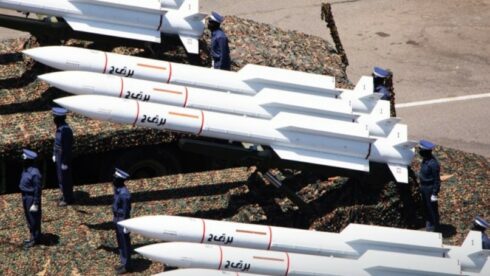The Houthis (Ansar Allah) shot down an MQ-9 Reaper combat drone of the United States military on April 19, the second in less than 24 hours.
The MQ-9 was shot down while conducting “hostile operations” over the region surrounding the capital, Sanaa, Houthi military spokesman Brigadier General Yahya Saree said in a statement, noting that the drone was targeted with “a locally-made surface-to-air missile.”
“This was the second drone our air defenses have successfully shot down in 24 hours and the sixth during the current month of April. This brings the number of drones shot down during the Battle of the Promised Victory and Holy Jihad to 21,” the spokesman added.
“The continued airstrikes and targeting of civilians, their property, as well as public and private facilities will not break the will of the faithful, struggling Yemeni people. They will only lead to greater steadfastness and unwavering support for the oppressed Palestinian people in the face of the genocidal war crime being perpetrated by the Zionist enemy against our people in Gaza,” he concluded.
MQ-9 combat drones, which cost upwards of $30 million per a unit, are primarily used to collect intelligence, but have the ability to conduct pinpoint strikes. The advanced drones can operate for more than 27 hours and reach altitudes of over 25,000 feet. More than 300 drones are said to be in service with the U.S. military.
Just a day earlier, the Houthis shot down an MQ-9 over Sanaa. The U.S. military acknowledged the aerial loss, without providing any details.
While the Houthis do not have a traditional air defense network, they do possess several types of medium-range surface-to-air missiles that can engage targets flying at high altitudes like MQ-9 drones.
These missiles are the Fater-1, a copy of the Soviet-made 3M9 used in the Kub system with a range a little bit over 22 kilometers, the Barq-1 and 2, both are thought to be derivative of the Iranian-made Taer-2 with a range of 50 and 70 kilometers respectively.
The group also operates an Iranian-made missile-drone hybrid identified by the U.S. military and intelligence as type 358. The interceptor is said to have a range of 150 kilometers.
The U.S. military resumed strikes against the Houthis on March 15 on orders from President Donald Trump, who said at the time that the large-scale operation was launched in response to the group’s renewed attacks on Israel-affiliated shipping in the Red Sea.
In response, the Houthis began resumed attacks on U.S. Navy warships near Yemen and began to target U.S. combat drones operating over the country again.
The ongoing U.S. operation in Yemen is yet to deter the Houthis or to degrade their military capabilities. Still, the Trump administration will not likely back down.
_______________________________________________________________________________________________________________________
SouthFront: Analysis and Intelligence
NOW hosted at southfront.press
Previously, SouthFront: Analysis and Intelligence was at southfront.org.
The .org domain name had been blocked by the US (NATO) (https://southfront.press/southfront-org-blocked-by-u-s-controlled-global-internet-supervisor/) globally, outlawed and without any explanation
Back before that, from 2013 to 2015, SouthFront: Analysis and Intelligence was at southfront.com





more austerity for americans whos nation currency and infrastructure crumbles to replace mafia ruun military industrial complex . d.o.g.e. will never audit the pentagon or the cia . fort knox gold is gone .
οι η.π.α. δεν ειναι εθνοσ !! ειναι ενα πολυφυλετικο-πολυεθνικο κρατοσ με συνεκτικο κρικο το δολαριο !!
i’m more interested in how many houthis there are and how many missiles trump has and how much profit (employment, taxes, etc.) does the us make from producing one missile? weapons make good money, and the houthis are cheap even for iran.
awesome! how many of these drones does uncle sam have left?
not enough to reap what they sowed…
the houthis are doing a fine job, the only way to evict thenjews from where they don’t belong is perseverance and tenacity in theface of the enemy and the enemy is the jews. the c*nts won’t be able to economically support the jews for an extended. period of time and that will be the end of the jews wherever they will found!
oh dear, when the jewsa collapses, shlomo will have nobody to leech off.
in burgerland we are all gullible violent hillbillies we prefer spend billions on weapons and war that we always lose create more homeless so we can spit on them
the exceptionals think that their outpost in the middle east named israel must survive. i don’t understand why the exceptionals are so emboldened in exceptionalism and revealed all their plans in advanced, so their adversaries can join together against them. usa empire is not in good shape and mr. trump will lead them faster to their collapse. more countries are outmaneuvering the exceptionals and their tariffs and their sanctions.